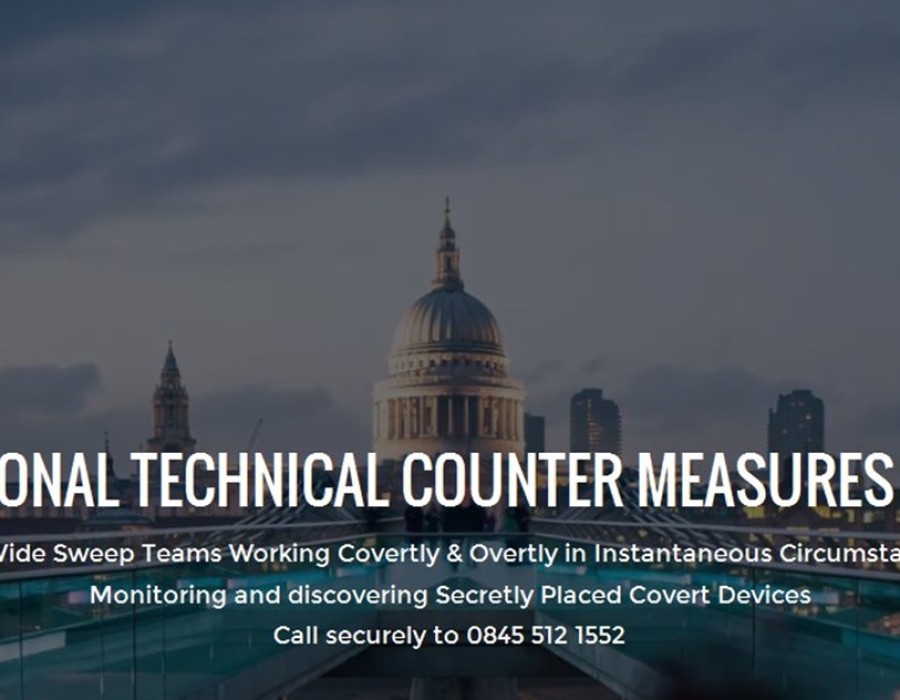In an era marked by rapid technological advancement and increasing concerns about privacy, the term "bug sweep detection" has gained significant importance. Whether you are a private individual, a business owner, or a government official, the threat of unauthorized surveillance is real. Bug sweep detection is the process of identifying and eliminating hidden electronic surveillance devices, such as microphones, cameras, and GPS trackers, that might be monitoring your activities without your consent. This article delves into the intricacies of bug sweep detection, its significance, and the methods and tools used to safeguard privacy.
Understanding Bug Sweep Detection
Bug sweep detection, also known as Technical Surveillance Countermeasures (TSCM), involves a comprehensive inspection of an area to identify and neutralize surveillance devices. These devices, often referred to as "bugs," can be covertly placed in various locations to capture audio, video, or location data. The process of bug sweeping is crucial for maintaining privacy and security in personal, corporate, and governmental settings.
Why Bug Sweep Detection is Essential
The necessity for bug sweep detection arises from several factors:
- Corporate Espionage: Businesses often handle sensitive information, including trade secrets, financial data, and strategic plans. Competitors or malicious actors may use surveillance devices to gain an unfair advantage.
- Personal Privacy: Individuals may be targeted for surveillance due to personal relationships, financial status, or involvement in legal disputes. Ensuring privacy is crucial for personal safety and peace of mind.
- Government Security: Government officials and agencies are prime targets for espionage. Bug sweeps are vital for protecting national security and confidential communications.
- Legal and Ethical Compliance: Unauthorized surveillance can lead to legal repercussions and ethical breaches. Regular bug sweeps ensure compliance with privacy laws and ethical standards.
Techniques and Methods of Bug Sweep Detection
Bug sweep detection involves a combination of manual inspections, electronic scanning, and advanced technical tools. Here are some common techniques and methods:
Physical Inspection
A thorough physical inspection is the first step in bug sweep detection. This involves:
- Visual Examination: Inspecting the area for any unusual objects or devices that may be out of place, such as hidden cameras or microphones.
- Structural Inspection: Checking walls, ceilings, furniture, and other structures for signs of tampering or concealment.
- Wire Tracing: Following and inspecting wiring systems for any unauthorized connections or devices.
Electronic Detection
Electronic detection tools are used to identify signals and frequencies emitted by surveillance devices. Common tools include:
- RF Detectors: Radio Frequency (RF) detectors can identify and locate devices transmitting wireless signals, such as hidden cameras and microphones.
- Non-Linear Junction Detectors (NLJDs): These devices detect the presence of electronic components by identifying semiconductor materials, which are commonly found in surveillance bugs.
- Spectrum Analyzers: These tools analyze the electromagnetic spectrum to identify unusual or unauthorized transmissions.
- Thermal Imaging Cameras: These cameras detect heat signatures emitted by electronic devices, helping to locate hidden bugs.
Technical Countermeasures
In addition to physical and electronic detection, technical countermeasures are employed to neutralize threats:
- Signal Jammers: These devices block or disrupt the signals from surveillance devices, rendering them ineffective. However, their use may be regulated or illegal in some jurisdictions.
- White Noise Generators: These devices produce random sound frequencies to mask conversations, preventing eavesdropping by audio surveillance bugs.
Cyber Countermeasures
With the rise of cyber surveillance, protecting digital communications is also crucial:
- Encryption: Use end-to-end encryption for emails, messages, and phone calls to ensure that only intended recipients can access the information.
- Secure Networks: Employ Virtual Private Networks (VPNs) and secure Wi-Fi connections to protect data from interception.
- Anti-Malware Software: Regularly update and use anti-malware software to protect against spyware and other malicious software.
The Role of Professional TSCM Services
While some aspects of bug sweep detection can be performed using off-the-shelf tools, professional TSCM services offer a higher level of expertise and thoroughness. These services employ trained specialists who use advanced equipment and methodologies to conduct comprehensive sweeps. Here are some benefits of hiring professional TSCM services:
- Expertise and Experience: TSCM professionals have extensive training and experience in detecting and neutralizing surveillance threats.
- Advanced Equipment: Professionals use state-of-the-art equipment that can detect even the most sophisticated surveillance devices.
- Thoroughness: Professional sweeps are more thorough and can identify hidden threats that may be missed during a DIY sweep.
- Regular Monitoring: TSCM services can provide ongoing monitoring and periodic sweeps to ensure continued security.
Real-World Applications of Bug Sweep Detection
Bug sweep detection is applied across various sectors to ensure security and privacy:
Corporate Sector
Businesses use bug sweep detection to protect sensitive information from corporate espionage. Regular sweeps are conducted in boardrooms, offices, and manufacturing facilities to safeguard proprietary data.
Government and Military
Government agencies and military installations are high-value targets for espionage. Bug sweep detection is integral to maintaining national security and protecting confidential communications.
Legal and Personal Contexts
In legal cases, bug sweeps can prevent unauthorized surveillance that may compromise case integrity. Individuals may also employ bug sweeps to protect personal privacy in their homes and vehicles.
Hotels and Conference Centers
High-profile events and guests at hotels and conference centers can be targets for surveillance. Regular sweeps ensure the privacy and security of guests and confidential meetings.
Conclusion
In today's interconnected world, the importance of bug sweep detection cannot be overstated. As technology continues to advance, the methods of surveillance become more sophisticated, making it essential to stay vigilant and proactive in protecting privacy and security. Whether through physical inspections, electronic detection, or professional TSCM services, implementing robust bug sweep detection measures is crucial for safeguarding personal, corporate, and governmental interests. By understanding and employing these techniques, you can ensure that your private conversations, sensitive data, and strategic plans remain secure from unauthorized surveillance.





Comments